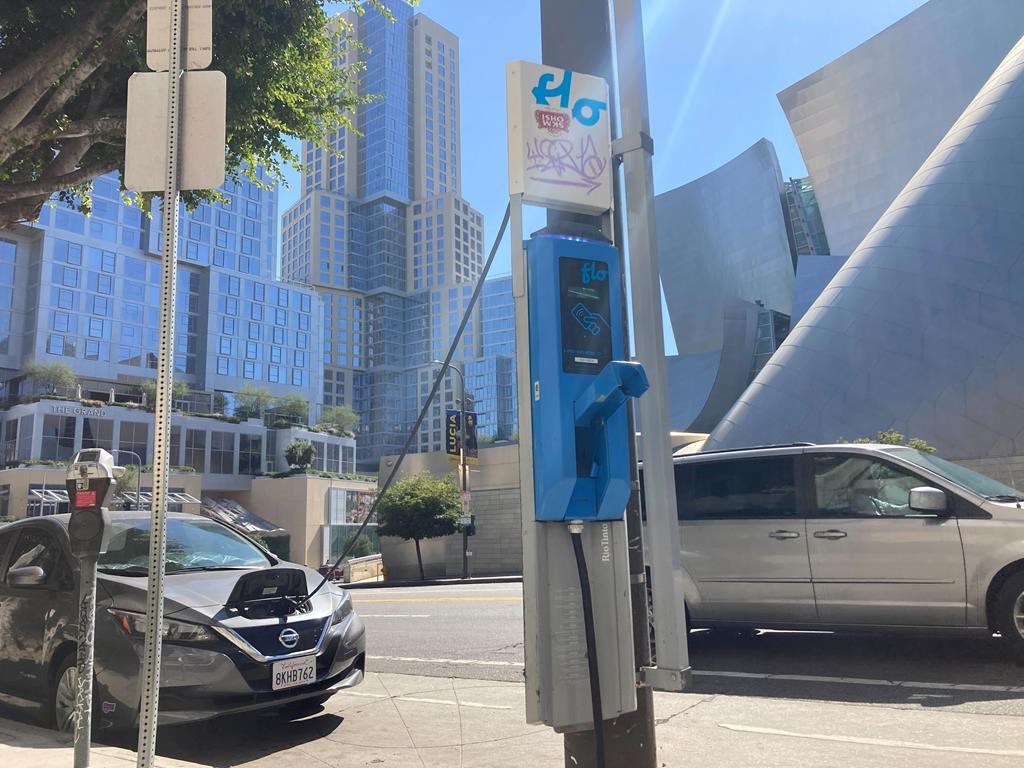DETROIT (AP) — seven major automakers say they are joining forces to build a North American electric vehicle charging network that would rival Tesla and nearly double the number of fast-charging outlets in the U.S. and Canada.
General Motors, BMFLIX, Honda, Hyundai, Kia, Mercedes and Stellantis said on Wednesday they will allocate a multibillion-dollar investment to build “high-power” charging stations with at least 30,000 plugs in urban areas and along travel corridors by 2030.
The dramatic move is intended to speed up the adoption of electric vehicles, easing fears that Chargers will not be available for long-distance travel.
The companies would not disclose the exact number of charging stations or the financial details of the joint venture they are forming to put the network in place. They said the first of the US Chargers will be ready by next summer.
The automakers said in a joint statement Wednesday that they want to build the “leading network” of reliable high-power charging stations in North America.
“The parties have agreed not to disclose specific investment numbers at this time, but the Seven founding automakers intend to work as equals to ensure the success of the joint venture,” the companies said in a written statement responding to questions from The Associated Press. “As you can imagine, such a high-power charging network of this scale requires a multibillion-dollar investment.”
There are currently just under 8,700 direct-current fast charging stations in the U.S. and Canada with nearly 36,000 charging outlets, according to the U.S. Department of energy. Even with 30,000 more outlets, the U.S. will need many more chargers. The National Renewable Energy Laboratory estimates that by 2030 182,000 fast chargers will be needed.
Fast chargers can take a battery to 80% of its capacity in 20 minutes to an hour, making them optimal for travel corridors and in some cases comparable to the time it takes to fill a car with gasoline. They are much faster than 240 volt “Level 2” chargers that can take hours to get a battery on a full charge.
The new network is expected to have 10 to 20 charging threads per station, meaning it will have a minimum of 1,500 stations and a maximum of around 3,000.
Tesla’s network, with the largest number of fast chargers in North America, has 2,050 stations and more than 22,000 outlets in the U.S. and Canada, DOE says.
The network formed by the seven automakers would be public and open to all electric vehicle owners. There will be connectors for both Tesla’s standard charging sockets in North America and the Combined Charging System sockets used by other automakers.
The network will accelerate sales of electric vehicles in North America by getting people who are now reading stories about holes in the charging network that prevent long-distance travel, said Stephanie Brinley, an analyst with S&P Global Mobility.
“It’s stopping them from even exploring what EV life is like,” Brinley said. The network’s announcement ” is giving them confidence that this will work.”
In their statement, the seven automakers said they would use renewable energy as much as possible to power the Chargers, and they would be in convenient locations with tents and amenities such as toilets, food services and nearby shops.
Brinley said a good charging experience is key to winning the trust of potential EV buyers. “The reality is that consumers want to feel comfortable charging,” she said.
It will take years and billions of dollars to build the network, which will need special wiring, Brinley said.
The current charging network, built by a group of companies, is growing, but is often unsafe or in bad places. That has led Ford, General Motors and others to sign deals with Tesla to give their EVs access to its much larger network of fast chargers. Automakers have also announced they are building their own networks, but Brinley said the moves were not enough.
It also does not see the announcement of the automakers as a threat to Tesla. “I think the reality is that this is necessary, and these automakers are coming together to say ‘we need this,’ ” she said. “Tesla can’t build enough for everyone.”
Automakers will seek to use U.S. government funds from the bipartisan infrastructure law to help pay for the grid.
Stellantis CEO Carlos Tavares said the network is a response to the significant growth expected in electric vehicle sales, and the group aims to exceed customer expectations. “We believe that a charging network at scale is vital to protecting freedom of mobility for all,” he said.
In the U.S., electric vehicle sales continued to grow during the first half of the year to more than 557,000 vehicles, or 7.2% of all new vehicle sales. The EV market share last year was 5.8% with just over 807,000 sales. Most industry analysts predict continued growth in EV sales for the next decade or more.
But in June, EV inventories began to rise as factories began rolling out new models. Not including Tesla and Rivian, dealers had enough EV supply on hand for 103 days of sales, according to Cox Automotive. But there was only a 53-day supply of all vehicles, indicating much lower inventories of combustion engine vehicles.
However, Cox is predicting that EV sales will rise to over 1 million for the first time this year.
Consulting firm Lmc Automotive predicts EVs will reach 14.4% market share in 2025, and close to 40% by 2030.
New greenhouse gas emissions standards proposed by the Environmental Protection Agency say automakers could meet the requirements in 2032 if 67% of all new vehicle sales are electric.
Tom Krisher, Associated Press
#Major #automakers #team #build #electric #vehicle #charging #network #rival #Tesla
